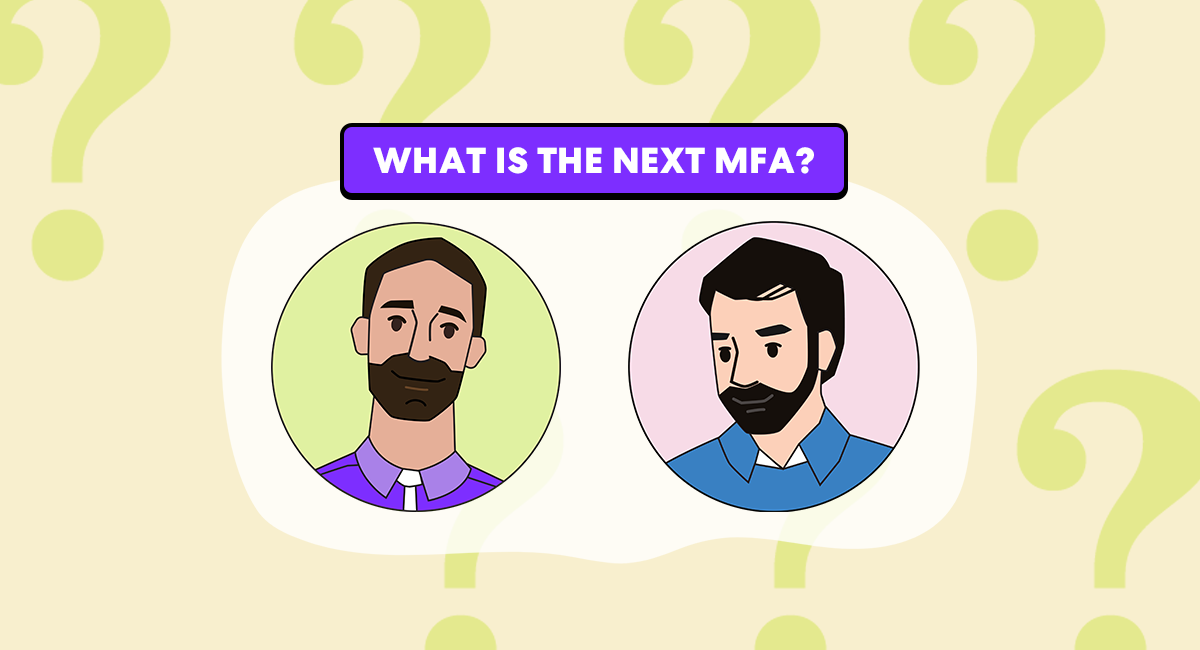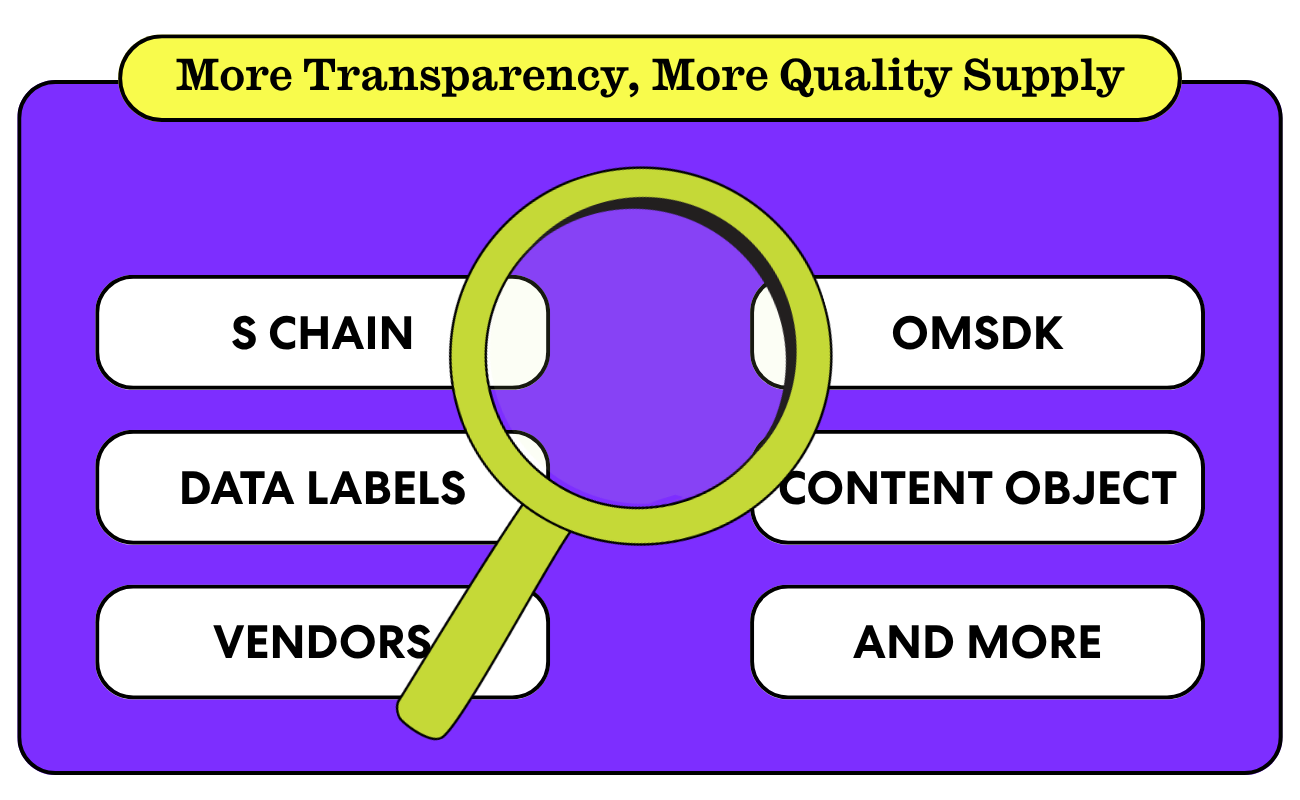
Blog / Insights
In a two-part deep dive, supply chain expert Chris Kane takes on bid duplication. In this part, we take a closer look at the current industry standards and the gaps they’re leaving behind.

Chris Kane
Founder and President, Jounce Media

Gio Gardelli
Head of Product at Yahoo DSP

Chris Kane and Gio Gardelli sit down for an open discussion on how bid duplication impacts the ecosystem, making a strong case for direct-to-publisher approaches like Yahoo Backstage and clearer definitions of directness—so everyone from DSPs to advertisers can make better decisions on supply.

Gio: I wonder if there's a fundamental problem with programmatic buying. In that, publishers make more money when they duplicate their ad requests. Publishers will always choose the way that makes them more money. Naturally, I would do the same. And if we solve that problem, then a bunch of things can be solved on their own. My question is--If publishers have incentives that are aligned with the demand side, would they voluntarily choose solutions that are better for the advertisers?
.png)
Chris: We can outline some very strong hypotheses of why publishers make more money when they duplicate. The solution is going to potentially land on your shoulders or more generally on the shoulders of Yahoo DSP.
Let's do a simple web example, Publisher B has double the amount of duplication as Publisher A. The solution would be for you, to not avoid participation in half of the auctions, but only participate in like a third of the auctions. Disproportionately penalize bid duplication, which would steer substantially more spend towards the publishers with the lowest duplication. Now all of a sudden there's a management team meeting at Publisher B that's like, "Guys, how do we send fewer duplicate requests to Yahoo DSP because that's how we make more money from those guys?"

Gio: Yeah, so I agree with you. Every time I read about bid duplication, I always feel that we take it for granted that publishers make more money. We have a thesis–at the line level–the majority of advertisers have too much supply for what they need to fulfill their budgets. The best way to pace supply evenly is by using a probabilistic method. It’s like rolling the dice—only letting a certain percentage of supply through at any moment. And that creates this perverse incentive where if a publisher sends us the same supply twice, we roll the dice twice against their supply, giving them better odds. The interesting piece, it's kind of like a prisoner dilemma, right?

If all publishers collaborate and nobody does bid duplication, then they could all pick their preferred direct path and cut intermediaries. But as soon as one publisher starts duplicating their supply and adding intermediaries, that publisher is effectively stealing money from the others publishers. And now everybody's incentivized to follow and we end up in a sub-optimal equilibrium. I've never seen very good explanations as to why and how we could change that.
.png)
Chris: I love that you’re aware, but what should you do as a DSP to counteract the incentive? Well—penalize the ones who do it by discounting their chances of winning. Then the questions become “how do we do it reliably” and “ how do we do it programmatically,” right? Maybe today you have a coin flip for this campaign based on its pacing requirements– and participate in one out of every 10,000 bid requests.
That's where the Jounce Media data can come in handy. Now you've got insights to build a more complicated version of that- it could be one out of every 30,000 for Seller A with high bid duplication, and one out of every 5,000 for Seller B with low bid duplication. That's a better direction, but maybe it's not the right approach, maybe the publisher level is better and weighting by publisher. But that could be a super complicated change to the way your pacing would work.
The simplest solution is just buy through Yahoo Backstage. Unless publishers are initiating duplicate auctions there, that's going to give you as close to a deduplicated view of the supply

Gio: One follow-up question. One thing that has come up in these conversations is how ads.txt and seller.json work today. The way we implemented Yahoo Backstage, it looks as direct as any SSP pipe. When technically speaking, everything that flows through an SSP is intermediary. It’s resold in the sense that there's somebody in between the DSP and the publisher. That step is necessary for the vast majority of publishers. However now, there's a bunch of publishers out there that either own their own tech stack or have integrations through pipes like Yahoo Backstage. But the standard doesn't treat them as more direct.
Do you think there's a role that IAB tech lab can play to further expand the standard and make it more granular and help distinguish between a DSP buying straight to a publisher or through a publisher owned exchange versus a DSP buying through a third party exchange that then pays the publisher.
.png)
Chris: I don't know what our point of view is, but certainly if I worked for Yahoo DSP, my point of view would be that Yahoo Backstage is more direct than a SSP. And you're right that the specs don't really handle that. Probably the closest you get to that is the IAB OpenRTB SupplyChain object (ie. schain). But I'm not quite sure how you'd structure a schain and expose it to buyers to demonstrate that the DSP directly issues payment to this publisher rather than going through an SSP. That's a long way of saying I don't know. I do understand what you're talking about and I think a lot about if or how Jounce Media data should reflect that.

Gio: Because we'd love to have an option where a buyer can just say–only buy through the most direct path or paths if there are multiple equally derived paths available. Right now the closest thing is direct sold supply, but arguably that most direct path (i.e. Yahoo Backstage) is only a subset of what's being classified as direct today.
.png)
Chris: This is probably on your radar, but the other active discussion that's going to bump up right against this is technical directness and financial directness. There's some work happening within IAB Tech Lab to determine—is it the same when an exchange is integrated with a publisher through client side pre-bid versus server side auction?
They're both financially direct, but are they equivalently technically direct? No, the exchange doesn't have access to the page as the server-side integration and that should be communicated through the supply chain. Would buyers have more trust in the signals when they've got a client side connection? I have no idea where that lands but that is another very related thing that's in motion at the moment.

Gio: Yeah, that’s all about the auction tech. There’s also a bunch of intermediaries trying to make things look more direct by changing their commercial model and shifting where they take their fees.
.png)
Chris: A company that is acting as a wrapper has the ability to take one inbound request and turn it into 10 outbound bid requests. Or they can take an inbound request that declares user ID 1 and then initiate auctions that declares user ID 2. They have much more of a technical ability to mess around with the supply chain. And as you're saying—they also change their commercial model so that they can kind of be invisible in the supply chain. That's pretty concerning.

Gio: Sometimes it’s challenging to explain to buyers why direct connection, or 'farm-to-table' so to speak, are better. It can seem counterintuitive, especially when advertisers occasionally see lower prices through resold inventory. But in reality, adding intermediaries should only increase take rates and ultimately raise the CPM for the buyer.
.png)
Chris: On the publisher side different stack configurations end up causing resellers to actually have cheaper access to supply than the direct paths. But yeah, this is an important point and as an industry, we need to do a better job of giving buyers confidence that they really are better off turning off some of these indirect supply chains. Even if we create something loosely analogous to MFA, in that even if the metrics look good–we know better. We got there on MFA and I just don't think we're there on reselling…yet.


Gio: We really appreciate your time and insights, Chris. We’re excited to integrate Jounce Media data into Yahoo DSP and help our advertisers build and activate their supply strategies even smarter.
--
About Chris Kane
Jounce Media is the industry leader in programmatic supply chain management and is trusted by the world's largest marketers, agencies, media companies, and advertising technology platforms to inform supply path optimization strategies. Chris Kane founded Jounce Media in 2015. Chris was previously Chief of Staff to the CEO and CFO at AOL. Prior to AOL, Chris managed a portfolio of enterprise accounts at Turn, a pioneer in the DSP category. He started his career as a management consultant at Oliver Wyman where he focused on the converging media and technology sectors.
–––
About Gio Gardelli
Gio Gardelli is the Head of Product at Yahoo DSP. He is responsible for ad products, including targeting, identity, measurement, and data infrastructure for the Yahoo DSP. Since joining the company in 2018, Gio has been focused on building solutions to prepare advertisers and publishers for a future without cookies & IDFAs, including Yahoo ConnectID, Next-Gen Solutions, and more. He is also an IAB Tech Lab Board Member where he spearheads and collaborates on the development of innovative solutions and guidance for the digital media ecosystem.